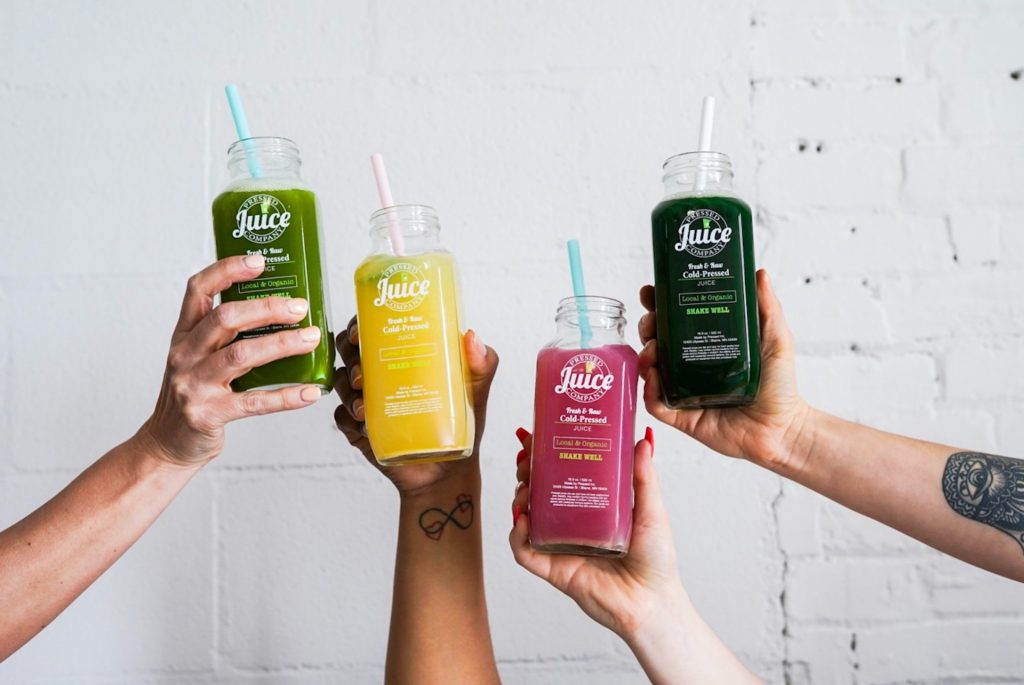Key Foodservice Trends for the Health-Conscious Consumer
One third of Canadians are looking for healthy choices at fast-food restaurants (Mintel, 2019). This wasn’t always the case, however changing consumer habits and tastes have indicated that in general, customers are looking for healthier food when dining out.
As the foodservice adjusts to new challenges, one way businesses can diversify their menu to succeed in 2020, is to incorporate healthier options into their offerings. While “healthy” can be a subjective term, by offering a wider variety of plant-based and food restriction-inclusive options, you can capitalize on this movement.
When it comes to healthy meal options and consumer tastes, here are key trends to watch out for and incorporate into your business in the coming year:
Plant-Based Foods
According to the Plant-Based Foods Survey by Nielsen (2019), the number one reason people are eating more plant-based products is health. This is followed by the sustainability and treatment of animals.
It’s important to note that while the number of vegans (two per cent) and vegetarians (five per cent) is relatively small, the number of flexitarians (25 per cent) and those looking to reduce their meat intake boost the number of people looking for meat alternatives to almost nearly one third of the population (Mintel 2019). When it comes to millennials the percentage is significantly higher. Again according to Mintel, 42 per cent of women ages 18 – 44 are looking to reduce their meat consumption (2019).
Plant-based eating is here to stay. Over half of Canadians have had a positive reaction to Canada’s new food guide – where a half plate of veggies is promoted along with plant-based protein sources (Technomic Inc, 2019). This is just the start; looking at the U.K. as an example, we can see that they have five times the household penetration of meat alternatives that Canada does today (Nielsen Homescan, March 2019).
“Nothing will benefit human health and increase chances for survival of life on Earth as much as the evolution to a vegetarian diet.” – Albert Einstein.
Clean Labelling
Typically, you don’t see ingredients on a menu but maybe you should. The health-conscious consumer is looking for “real food”. They want to see a short list of ingredients with words they can pronounce.
For example, on a menu, this might look like:
Wild Mushroom Soup: Fresh mushrooms, vegetable broth, butter, herbs and a touch of wine
Vanilla Ice Cream: Cream, vanilla bean, sugar
When considering whether or not this format may be for you and your business, think about the fact that The Hartman Group reports that 65 per cent of consumers are looking for short ingredient lists and 58 per cent of consumers are looking for ingredients they recognize (2017).
Inclusive Menus
Seven per cent of people self-report a food allergy (healthCanada.ca). That means that every fourth group of diners has someone with a food allergy. Food allergies and restrictions are serious and your establishment’s ability to prepare and serve an inclusive menu is critical.
Health Canada identifies the “Priority 9” allergens: peanuts, tree nuts, sesame seeds, milk, eggs, fish (including shellfish), soy, wheat, and sulphites. These allergens represent 90 per cent of food allergies.
The ability to cook and serve patrons with these allergies is key. Preparation surfaces, utensils, cooking ware, serving plates all must be free from any cross-contamination. The same goes for the ingredients you source. Ensuring an inclusive menu takes careful pre-planning and training. Staff communication with customers is also important in building trust that they are safe to eat here.
Individual Eating Approaches
Gone are the days of fad diets that promised massive weight loss!
Now, “diets” are not just about the end goal of losing weight, people are taking a much more holistic view of what they eat. Consumers are thinking about how their diets affect how they feel both physically and mentally. We’re also seeing a more individual approach to eating. Instead of one big fad rocking the diet world (think Atkins in the early 2000s), we have 12 major eating approaches that Canadians are experimenting with and hundreds of smaller ones.
In fact, in the U.S., half of the population tried a new eating approach last year. The number is higher for both millennials and gen Z, where 65 per cent and 69 per cent tried any eating approach in the past year (respectively). This number is lower for gen X and boomers, only 42 per cent of gen x tried any eating approach in the past 12 months and for boomers, the number is lower at 34 per cent.

These eating approaches range from a low-carb diet to vegan. Here are some of the eating approaches tried in the past 12 months:
Low-carb diet: 12%
Dairy-free or lactose-free diet: 9%
Intermittent fasting: 9%
Gluten-free diet: 9%
Mediterranean diet: 8%
Juice cleanse or detox: 7%
Whole foods: 7%
Vegan: 6%
Weight Watchers: 6%
Elimination diet: 5%
Ketogenic or Bulletproof diet: 5%
Paleo diet: 5%
Source: Hartman Health + Wellness 2019: From Moderation to Mindfulness report
Elevated Convenience
An “on-the-go” lifestyle is the norm these days. Proving this, 50% of all eating occasions are snacks (Hartman Group, The Future of Snacking, 2016).
Here is where it gets tough. Today’s consumer does not feel they need to make compromises. Though they want easily, portable, convenient snacks, they are also looking for healthy and great tasting food.
- 82 per cent of millennials want ‘Better For You’ products on the go (Hartman Group 2019)
- 76 per cent of people think that snacks can be good for you and indulgent at the same time (Mintel, Better for You Snacking, October 2018)
Taste is Still the Priority
No matter what approach to eating you subscribe to, the taste is still #1. It cannot be compromised.
When describing healthy foods, we tend to emphasize what’s missing (fat-free, low-salt, meatless), yet research shows that that can actually be detrimental to sales.
In the U.S., Panera Bread changed its “Low-Fat Vegetarian Black Bean Soup” to “Cuban Black Bean Soup” and sales increased significantly (World Research Institute). Its evidence that though we want healthier options, it’s always best to highlight the appetite appeal of a product, describing aspects like taste, texture and origin. Instead of using language to describe attributes, opt instead to use icons to designate properties like vegan, meatless or gluten-free.
Health and wellness is not a fad. Meeting the diverse needs of consumers in this space can be overwhelming but it is critically important as you diversify your menu and help not only consumers but your bottom line.

To learn more about how to leverage the movement towards healthier food so your business can Diversify and Thrive, see Sandi Hester speak at Food is Medicine on the Main Stage at RC Show 2020. Learn more about the show and how you can register for passes here.







